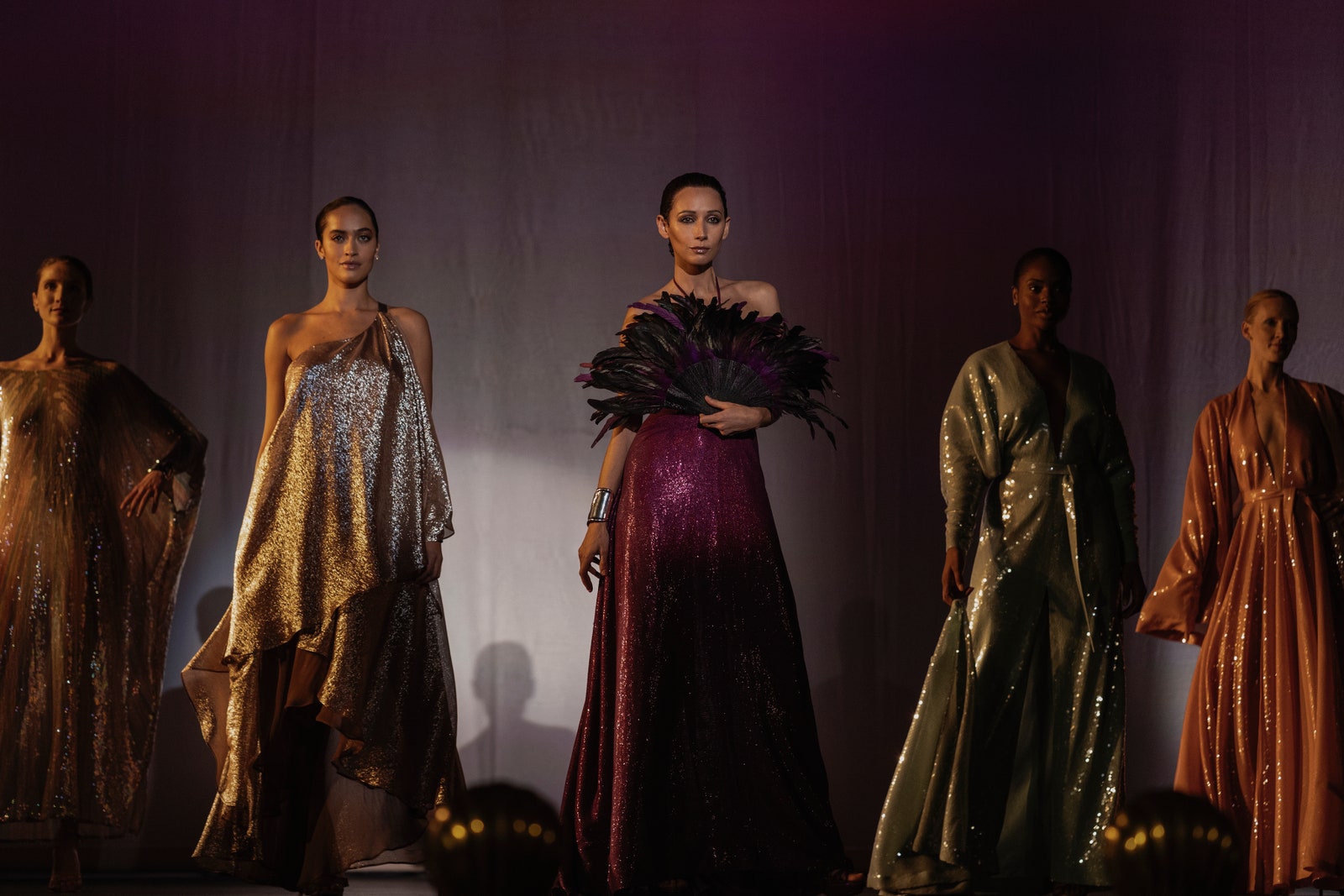What we’re left with is essentially a cautionary tale about licensing your name, although you might recall that Pierre Cardin did the same thing and seems to have turned out relatively
okay. Other critics have also pointed out that Halston’s deal with JC Penney was perhaps ahead of his time, a precursor to luxury collaborations with H&M and Target, but in fashion, to be ahead of your time is simply to be wrong. Fashion is about nothing but timing. Halston learns this lesson firsthand when he refuses to make blue jeans and, in the words of his investor David Mahoney (the ever-excellent Pullman), “misses the window.” And thus Calvin Klein topples Halston as America’s fashion superstar.
Mass camp has defined fashion in America over the past five years, making it into a cornerstone of popular culture. But it’s also absolutely at odds with Halston’s work and life, and so the tone and source material make for strange bedfellows. Mass camp is the language of the red carpet and celebrity fashion; fashion is now one of the main tools at a public figure’s disposal to indicate they stand on the right side of history, that they’re using their platform for positive means. It’s a blunt and obvious instrument, with many puppeteers (stylists, designers, publicists, influencers) pulling the strings. Its rhetoric is meant to be inarguable, its messages carefully constructed so as to be impossible to disagree with. In other words, it’s the opposite of what Halston represented: freedom, hedonism, feelings instead of statements. Contemporary clothing is all about what fits in the image, literally and figuratively. Halston was about what existed outside of it—evocative garments that were meant to expand. As Pat Cleveland, one of his favorite so-called Halstonettes, said in an interview last week, “Our whole life was about moving chiffon, cashmere and bugle-beaded dresses, that was our life. Moving those clothes, animating those clothes.” But Cleveland is but a bit player in Halston, and the act of animating those clothes is, too.
The show's dramatization of one of Halston's collections.
ATSUSHI NISHIJIMA/NETFLIXHalston, perhaps unsurprisingly, fails where so many films and shows about fashion fail: like a bad red carpet look, it’s simply too obvious. Why is it so hard to make a good fashion film? In the words of Johnny Thunders, you can’t put your arm around a memory! But you should be able to slip your arms into its sleeves. And all fashion people care about is film—movies are constant references for collections and photoshoots. Still, when Robert Altman, master of the immersive satire, released Pret-a-Porter, the fashion world sniffed at it as a lazily observed caricature; when The Devil Wears Prada was released, the Times ran a story about the inaccuracy of the clothes. In recent memory, only Phantom Thread has captured the obsessive, tormented nature of the genius fashion designer—the urgency of glamour, the bewildering conflation of surface and depth. Obviously, the dresses were a nightmare.

